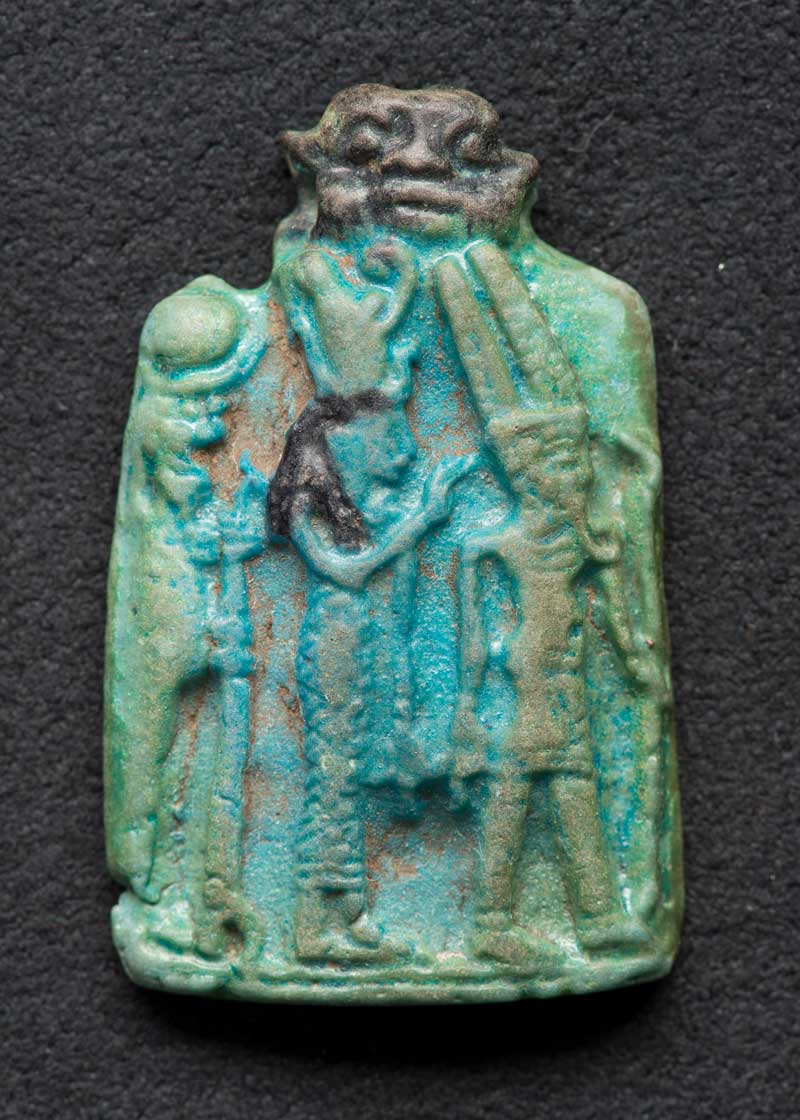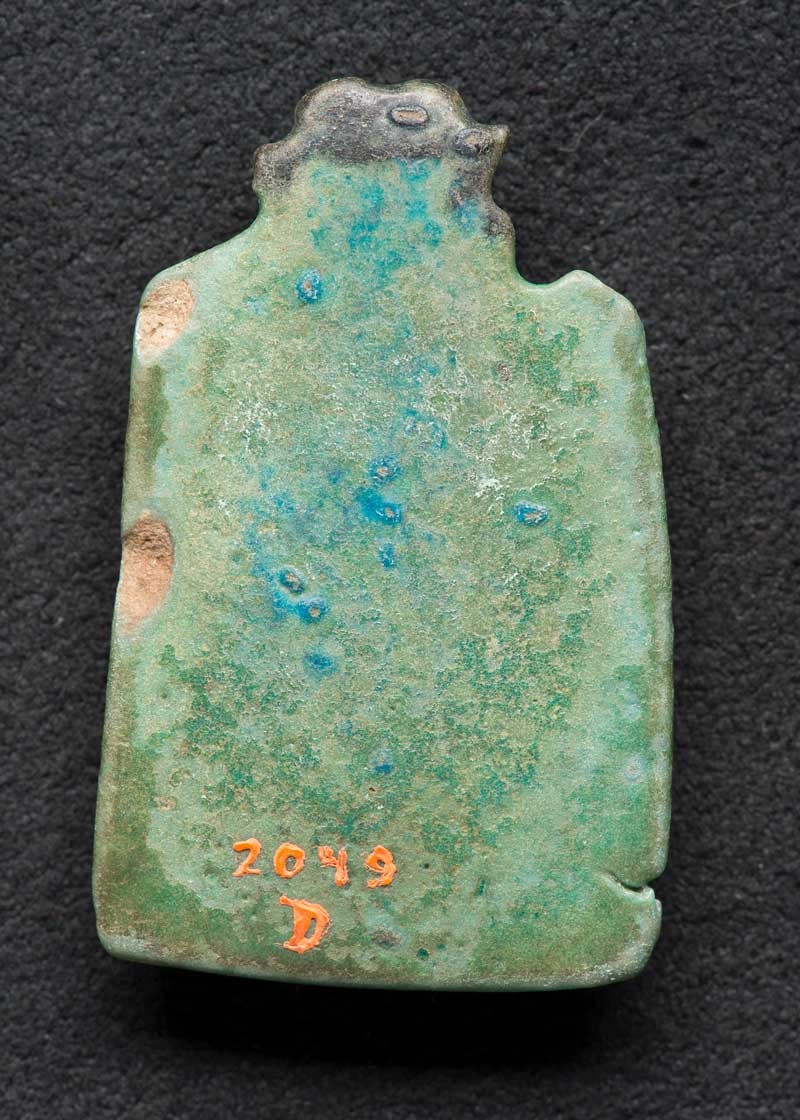Ancient Egyptian Amulets
Plaque with the Theban Triad
By Ashley Fiutko Arico


Measurements: Height: 4.45 cm; Width: 2.76 cm; Depth: 0.68 cm
Material: Egyptian Faience
Date: 25th Dynasty, ca. 747-656 BCE
Provenance: Deir el-Bahari, Thebes, Egypt
Collection: James Teackle Dennis Collection of Egyptian Antiquities
Description
This small faience plaque depicts the divine triad of Thebes in profile: the god Amun-Re, his consort Mut, and their son Khonsu. Amun wears a tall plumed crown, a curled divine beard, a broad collar, and a short kilt. He holds a was-scepter in his left hand. Mut stands behind Amun with her right hand raised to the back of his head. She wears a tight-fitting dress, the feathered design of which is indicated by the pattern impressed into the faience, and the Double Crown, emphasizing her status as the wife of the king of the gods. Khonsu stands behind his parents, the lunar disk on his head indicating his role as a moon god. The face of Bes looks out from the top of the amulet. It serves as a suspension loop and is pierced through horizontally.
Discussion
The ancient Egyptian pantheon was made up of a seemingly infinite number of deities, many of whom were organized through relationships that mirrored those observed in the human realm. These divisions could be made along political lines (i.e. Amun-Re as king of the gods or Thoth as the divine scribe) or through divisions into family groups. Among these genealogically-based groupings, the divine triad made up of a nuclear family (father, mother and child) was the most common. The most famous example is that of Osiris, Isis, and Horus, but triads existed all over Egypt, and were often associated with a particular city.
One of the most popular triads was that centered at the religious capital of Thebes (modern Luxor). This family, comprised of Amun-Re, his consort Mut, and their son Khonsu, was worshipped at the Karnak complex of temples, which stands just across the river from the reported findspot for this amulet. While all three of these deities could be honored through individual amulets, the emphasis in this plaque is on the group and their role as the preeminent deities of Thebes.
Plaque amulets depicting triads like this one first became popular during the Late Period (ca. 664-332 BCE), and enjoyed particular popularity during the Saite Period (ca. 664-525 BCE). Frequent groupings include the Memphite triad of Ptah, Sekhmet, and Nefertum, and the Osirian triad of Isis, Nephthys, and Horus. Amulets of triads, particularly the Osirian triad, were often found incorporated into mummy wrappings. Although several examples are inscribed on the back, often with the names of the deities depicted, the back of 2049 D remains undecorated.
References
Andrews, Carol, 1994. Amulets of Ancient Egypt. Austin: University of Texas. 18.
Meeks, Dimitri, 1996. “Hierarchies, Prerogatives, Groups.” In Daily Life of the Egyptian Gods, edited by Dimitri Meeks and Christine Favard-Meeks, translated by G.M. Goshgarian. Ithaca, NY: Cornell University Press. 33-52.
Te Velde, H., 1971. “Some Remarks on the Structure of Egyptian Divine Triads.” The Journal of Egyptian Archaeology 57. 80–86.
Wilkinson, Richard H., 2008. “Anthropomorphic Deities.” UCLA Encyclopedia of Egyptology. Edited by Jacco Dieleman and Willeke Wendrich. http://escholarship.org/uc/item/5s54w4tc.